Fery
International Hazard
    
Posts: 1026
Registered: 27-8-2019
Location: Czechoslovakia
Member Is Offline
|
|
2,5-diketopiperazine
15,0 g glycine + 100 g 1,2-ethandiole + 5 small glass balls (boiling stones) were placed into 250 ml FBF, condenser attached and mixture refluxed for
50 minutes. The glycine dissolved only just before the reflux started and from the beginning of the reflux the reaction mixture was a little foaming,
but there was more than enough room in the flask. The color of the reaction mixture quickly changed from colorless through yellow and red to very dark
red/brown. Liebig condenser with circulating water was used but maybe air condenser could be better according quite high b.p. of the solvent?
Allowed to slowly cool down to room temperature and put into fridge (+4 C) overnight. Vacuum filtered on Buchner funnel and filter paper - do NOT mess
with this any sintered glass!!! The filtration lasted 30 minutes using water aspirator pump !!! Gravity filtration can NOT be used!!! Washed on filter
2x with 25 ml of cold methanol (+4 C, from fridge). This filtration passed quickly in few seconds.
6,7 g of dark product obtained.
Recrystalized from 50 ml of water by just dissolving on boil and allowed to cool down to room temperature and then to fridge (+4 C), vacuum filtered
on Buchner funnel and filter paper and washed with 10 ml of cold methanol (+4 C).
Yield 5,8 g.
Recrystallized from 100 ml water + 1,0 g charcoal, filtered hot, boiled down to 60 ml and let to crystallize at room temperature and then in fridge
(+4 C). Vacuum filtered, washed on filter paper with 5 ml of cold methanol.
Yield 4,8 g.
Recrystalized from 75 ml of water + 0,5 g charcoal, receiving flask heated so steam coming up heated the filtration funnel, filtrate boiled down to 50
ml volume, slowly cooled to room temperature and then in fridge (+4 C) overnight, vacuum filtered, washed on filter with 5 ml water, sucked, then with
5 ml methanol, sucked to dryness.
Yield 3,9 g of pale golden-yellow crystals. I do not know whether it could be further purified to colorless??? Or perhaps other active charcoal could
decolorize it??? The charcoal used: Hydraffin CC 8x30 (coconut shell origin).
https://donau-carbon.com/Downloads/hydraffin.aspx
M.p. not determined, lit. 311-312 C, I have mercury thermometers to 360 C, but my glycerin bath could not be heated above 250 C and I do not have
other suitable medium to determine such high m.p.
solubility:
https://sci-hub.ee/10.1246/bcsj.43.3083
1,16 wt% at 15 C
1,66 wt% at 25 C
2,32 wt% at 35 C
circa 5 wt% at 60 C
https://sci-hub.ee/10.1021/cr200398y
3.1.3. Amino Acid Condensation. Direct condensation of
two amino acids 82 to form a 2,5-DKP 83 (Scheme 20) most
often suffers from a poor yield of product.[85]
https://pubs.acs.org/doi/10.1021/jo01167a020
something to study: cyclic dipeptides
https://www.nature.com/articles/s41598-018-19335-9
from proline cyclo(pro-pro) could be produced, here the formula:
https://pubchem.ncbi.nlm.nih.gov/compound/Cyclo_Pro-Pro#sect...
a lot of natural product contain this 2,5 diketopiperazine ring, see here:
https://en.wikipedia.org/wiki/2,5-Diketopiperazine

Attachment: jo01167a020.pdf (547kB)
This file has been downloaded 233 times
|
|
|
Fery
International Hazard
    
Posts: 1026
Registered: 27-8-2019
Location: Czechoslovakia
Member Is Offline
|
|
reagents
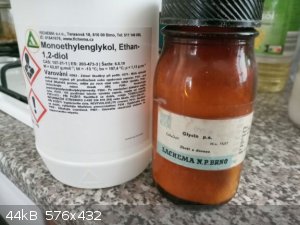
reflux

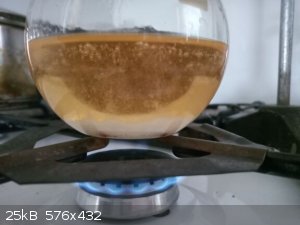 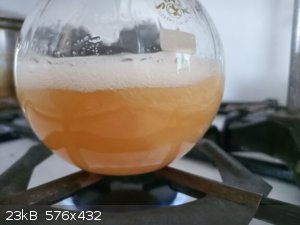 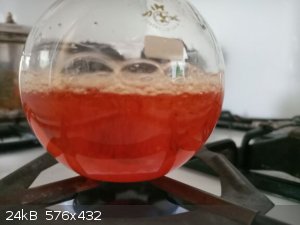  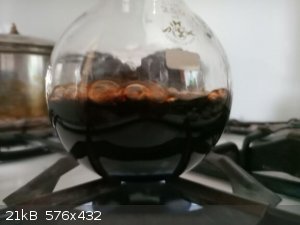 
vacuum filtration and crude dry product (the 5 small dark globes are glass balls used as boiling stones, unfortunately they are the same color as the
crude product so no contrast visible)
 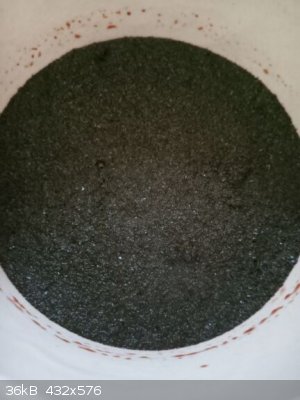 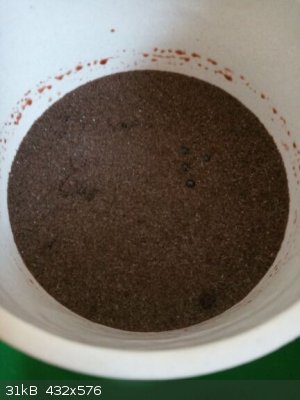 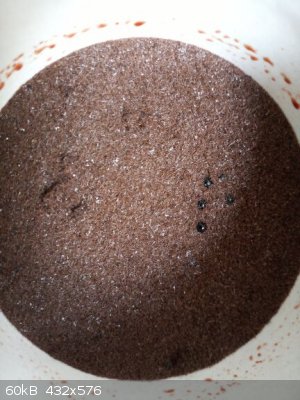 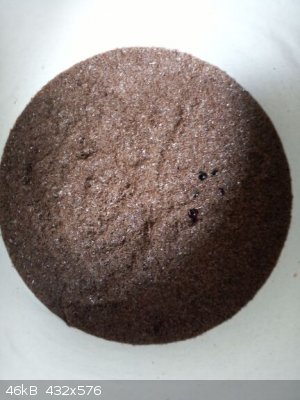 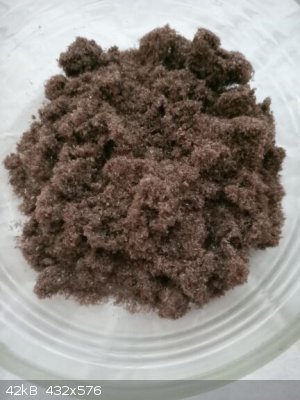
1st recrystallization from water (just dissolving on boil and then allowing to cool and crystallize - without any filtration - flame had to be
interrupted few times as it was to much powerful for such small flask, some crystals floating at the top of liquid finally dissolved)
   
filtration of the product and dry product
  
result of 2nd recrystallization - now using active charcoal

3rd recrystallization - again using active charcoal and final product (as you can see, the color is the same as previous crystallization - I wonder
whether it has to be such color or whether it could be purified further or decolorized???)
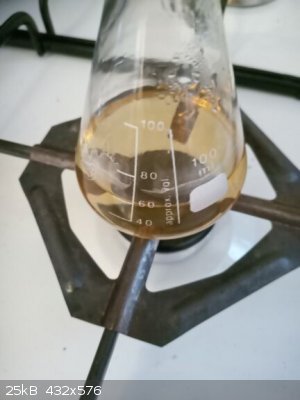 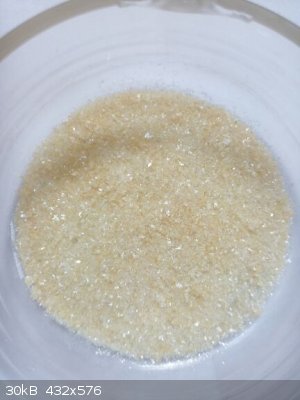
[Edited on 13-5-2022 by Fery]
|
|
|
Texium
Administrator
       
Posts: 4618
Registered: 11-1-2014
Location: Salt Lake City
Member Is Offline
Mood: PhD candidate!
|
|
Honestly, I think your product after the three recrystallizations looks amazing, especially considering what you started from. Considering how dark
the impurities are, there's probably only very trace impurities remaining, and mucking about with further recrystallizations would only marginally
improve the purity of the product, at the cost of further loss of yield. As usual, great job, and thanks for sharing the detailed write-up and nice
pictures!
|
|
|
Boffis
International Hazard
    
Posts: 1879
Registered: 1-5-2011
Member Is Offline
Mood: No Mood
|
|
Nice work once again Fery! I echo Texium's comment. I purchased 25g of this compound of Ebay within the last year. It was old stock but had not been
opened. It consists of a buff coloured powder so your final product actually looks pretty good, well done.
I was looking at this procedure recently (its described in Vogel too) as the partial hydrolysis of the diketopiperazine from glycine gives
glycylglycine which is the starting material for the preparation of 4-hydroxy-1,2,3-triazoles. The procedure in Vogel only gives a pretty poor yield
so yours does not look too bad an nowadays glycine is cheap.
|
|
|
Dr.Bob
International Hazard
    
Posts: 2750
Registered: 26-1-2011
Location: USA - NC
Member Is Offline
Mood: No Mood
|
|
That is a a great job, considering how hard that type of chemistry can be tough to do without fancy reagents. And diketopiperazines are common
starting materials for piperazines and other common chemicals. I wish my products looked that good after a few crystallizations. Nice job.
|
|
|
|